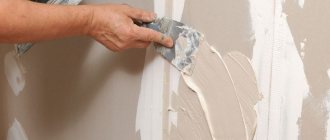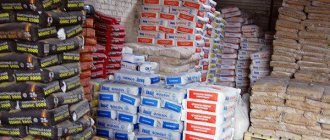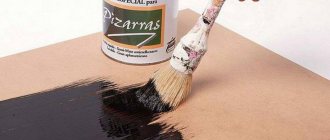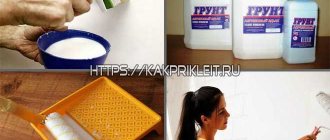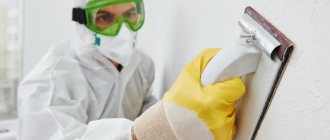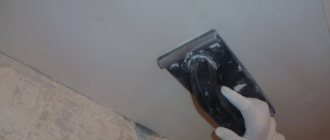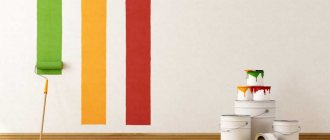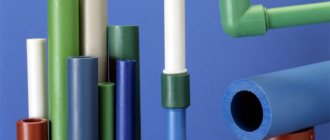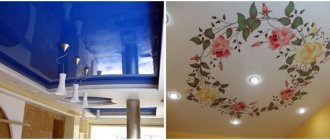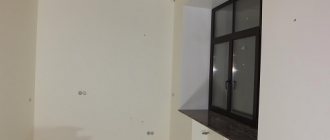How to choose façade putty for painting
You will not get such a smooth and white surface as after applying gypsum putty. A big advantage is their high mechanical strength and the ability to be used in rooms with high humidity. Walls covered with a cement layer do not dry out after drying, so the house will not be pollinated.
Polymer. Like all other layers, they come in dry mixes to be mixed with water, but you will also find those that are ready to apply, packaged in plastic buckets. They differ significantly from gypsum and cement finishing coatings. They should be used on so-called complex substrates, such as walls that are subject to small structural movements. They are also moisture resistant.
Polymer surfaces require sanding, so dust cannot be avoided.
Cement and lime. They provide a very smooth surface. They are easy to cut and have good adhesion to the ground. They can be used in rooms with high humidity. They should be smoothed out wet without sanding, but this is acceptable. Such smooth surfaces should not be laid over plaster surfaces. One of their advantages is that they are more resistant to mold than other finishes.
Some types of putty, such as PermoSan NQG, are best suited for repairing insulation painted with dispersion (organic) paints or dispersion plasters (acrylic or silicone).
Essentially, PermaSilan NQG is an elastic silicone paint with NQG technology, thanks to which it can be used not only for hair scratches and plaster cracks on walls, but even for cracks in insulation coatings where good vapor permeability is required, which is usually insufficient for elastic paints . It can be used prophylactically, even if cracks have not yet appeared.
Hair scratches occur mainly as a result of reactions associated with rapid cooling of the façade or rapid evaporation. Those most vulnerable to this phenomenon are thin layers of plaster applied to insulation material (and therefore all insulation) as they have too low a heat capacity so temperature changes can occur quickly.
Tips for choosing colors
Only the correct selection of colors and shades creates the desired effect. While this is not critical for interior walls, it has a direct bearing on the façade. It is advisable to take into account a number of criteria:
- The shade of the roof should match the color of the external walls. When the color scheme for the top of the house has not yet been chosen, it is better to paint the walls in pastel colors.
- With a dark roof, light shades are suitable for external surfaces.
- The double color scheme will add dynamism to the appearance of the house. The walls are painted in the main color, and light colors are selected for the openings.
- Individual facade parts should be distinguished by the structure of the coating or color - the use of both options is highly undesirable.
It is necessary to take into account the style, as well as the design of the local area, including lighting.
Is it possible to paint without puttying?
Many novice painters are interested in whether it is possible to paint without first applying putty or is this a mandatory procedure? If there is no desire to putty the plastered surface, this step is skipped. However, there must be a preparatory layer between the paint and the plaster - that is, it is strictly necessary to apply a primer. Plaster itself requires a large amount of paint due to its high permeability. For this reason, it is recommended to always coat plastered surfaces with a primer. Otherwise, stains will appear on the walls and the paint will not be absorbed evenly.
What are façade putties made of?
Such putties are easy to model, and after complete curing they become resistant to many adverse factors (for example, acids or solvents). However, different types of fillers are available on the market and the choice of the appropriate one should be dictated by the specific application.
The putty should be chosen depending on the surface you want to level - some are suitable for use on a wide range of surfaces (eg aluminium, galvanized steel, old paintwork, etc.), others only on some (eg plastics) . You should also pay attention to the drying time of individual compositions to prepare the required amount of putty.
You should also remember to follow the putty manufacturer's advice regarding the mixing ratio with the hardener or the thickness of the applied layer. Only with a properly selected, trained and assigned agent can you expect him to perform his function correctly.
Tools for work
Having chosen what to paint the walls with, let’s consider what tool you will need for this. In addition to the paint itself, you will need:
- brush or roller for priming;
- two brushes for applying paint – one wide, for the main surface, the second, narrow, for hard-to-reach places; a wide brush can be replaced with a paint roller;
- to create a decorative surface (for example, grainy or patterned), you can use rollers with attachments;
- if necessary, color of the desired shade to dilute the white base;
- grater for polishing small irregularities;
- large capacity (tray);
- ladder;
- personal protective equipment: gloves, a respirator when using a spray gun, a hat when painting ceilings.
Types of paints
You can determine which paint to use for putty by color, composition, texture, purpose, characteristics of water resistance, strength, layer density (hiding power), and wear resistance. Products must be environmentally friendly and safe for people. Paints for putty substrates are produced for interior and exterior (facade) work.
In the latter case, it is optimal to use the following paints:
- acrylic with high moisture resistance;
- silicone elastic;
- silicate moisture-resistant, easy to clean.
These coatings are durable and resistant to precipitation due to the presence of a film layer on the surface. Many compositions have a white tone, which can be changed through tinting. Several coloring pigments are added to the material to obtain the required tone. The mass is mixed using a construction mixer.
Coloring agents differ in the type of base.
For tinting putty surfaces, it is better to choose the following paints:
- Water-based. Requires application in 2 layers. After drying, a matte film is formed.
- Acrylic. Available in glossy, specialized and glyphthalic (with acrylic resin). This dye is non-toxic and has a creamy consistency that is easily distributed on the walls. The material dries quickly, maintaining a rich shade. The dye is also suitable for creating complex compositions with areas of painting, decoupage, and ornament.
- Latex. Dry quickly and are aesthetically pleasing. However, the material is only suitable for rooms with stable air temperatures (living rooms, bedrooms) and is not used for kitchens.
